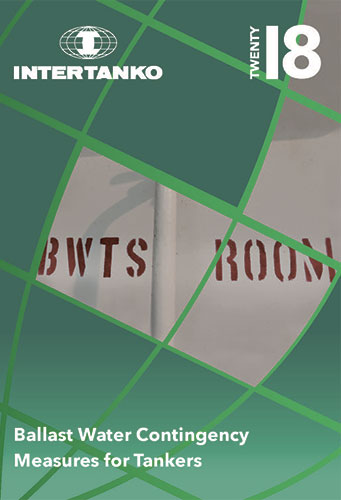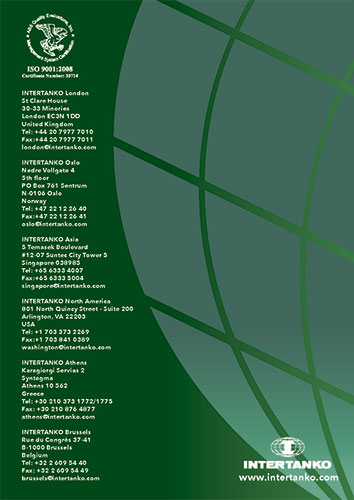Ballast Water Contingency Measures for Tankers/Меры по управлению балластными водами в танкерах, применяемые в условиях чрезвычайных ситуаций
Книга на английском языке.
This document provides guidance on practical contingency measures that may be considered in the event of a Ballast Water Management System (BWMS) failure.
In light of the entry into force of the IMO’s Ballast Water Management Convention (BWMC) as well as the step change in enforcement of the United States Coast Guard (USCG) regulations on ballast water, INTERTANKO’s Members are now more frequently using their BWMS to manage ballast water to meet the necessary discharge standards. However, while the BWMS installed have been type approved in accordance with either or both the IMO and USCG requirements, it is estimated that up to 60% of BWMS installed are not operating correctly. As such, and when vessels are delivered with BWMS or retrofitted to comply with BWMC or USCG Regulations, it is important to also amend the Ballast Water Management Plans (BWMP) to ensure a practical and realistic set of contingency measures is included. With Port States, Flag Administrations and Class Societies still considering the most appropriate options in the event of a BWMS failure, it is hoped that the contingency measures identified in this document, together with the procedures recommended, will provide a clear indication of what to expect from the vessel under such circumstances.
Contents
Introduction
1. IMO’s Ballast Water Management Convention
1.1 Background
1.2 Reporting
1.3 Expectations of each Party
1.3.1 Company, designated person ashore
1.3.2 Port State Authority
1.3.3 Flag Administration
1.3.4 Class Society
1.3.5 BWMS Manufacturer
2. United States Coast Guard Regulations
2.1 Background
2.2 Reporting
3. Contingency Measures for Tankers
CM.1 Repair BWMS at the ballast loading port
CM.2 Repair the BWMS en route
CM.3 Ballast water exchange (BWE) options
CM.3.1 Mid-ocean ballast water exchange (BWE) - without BWMS
CM.3.2 Mid-ocean ballast water exchange (BWE) - through the BWMS
CM.4 Ballast water exchange in a designated ballast water exchange area
CM.5 Shore based mobile treatment systems at the ballast discharge port
CM.5.1 Ballast water treatment boat or barge
CM.5.2 Mobile treatment facility transported on a barge or truck
CM5.3 Mobile ballast water treatment equipment
CM.6 Discharge to a port reception facility at the ballast discharge port
CM.7 Retain ballast water onboard
CM.8 Use water from a public water supply
CM.9 Partial ballast water discharge at 12nm from nearest land (US only)
4. Reporting and Reporting Forms
4.1 Model Reporting Forms
4.2 BWMS Repair Plan
Annex I Model Ballast Water Contingency Measure Report Form
Annex II Model BWMS Failure Reporting Form




